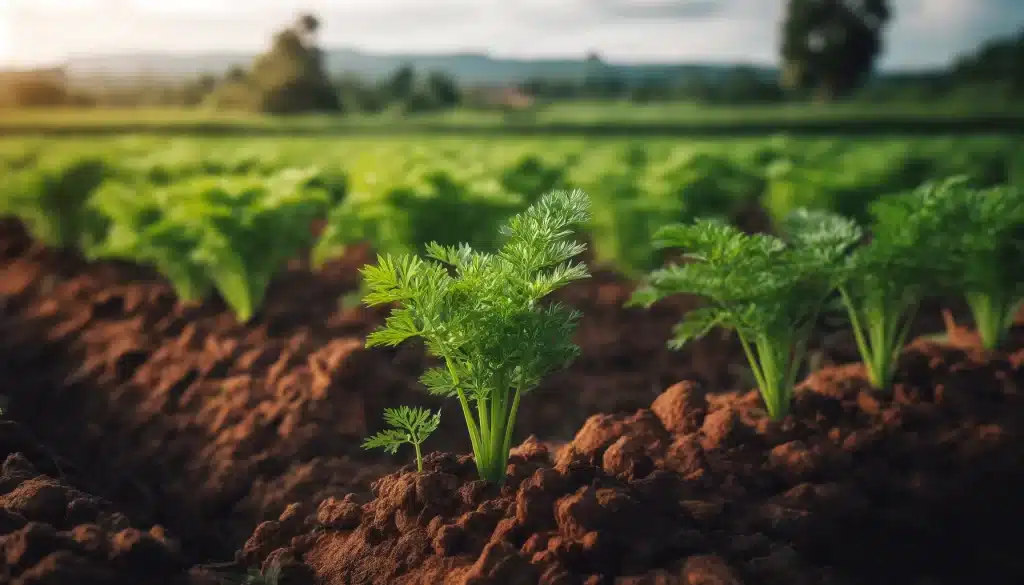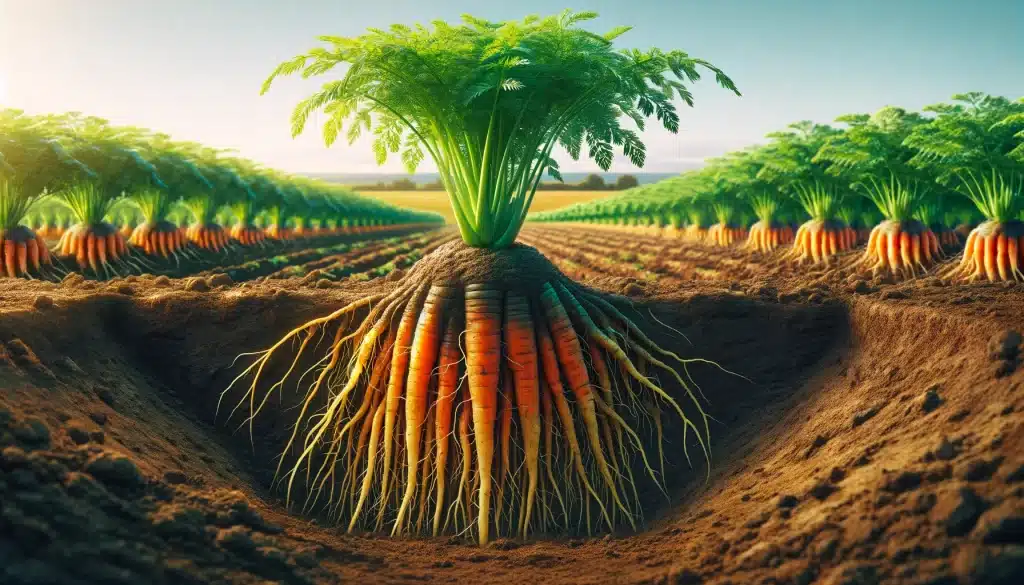Carrots, an essential crop in many diets worldwide, require careful management throughout their various phenological stages to ensure optimal yield and quality. Understanding these stages is crucial for farmers, as each phase of carrot development has specific needs in terms of soil management, irrigation, fertilization, and pest control. From sowing and germination to harvest, each stage of the carrot’s life cycle demands appropriate agricultural practices to ensure that the roots reach their ideal size and quality. In this detailed analysis, we will explore each of these stages, providing technical descriptions and best practices for each phase, aiming to help farmers maximize the potential of their carrot crops.

1. Sowing and Germination
The sowing and germination stage of carrots begins with soil preparation, which should be well-drained, loose, and free of stones to allow for straight root growth. Carrot seeds are sown directly into the soil at a depth of about 0.5 cm and spaced 2-3 cm apart. Germination can take between 10 and 20 days, depending on soil temperature, which should be maintained between 15 and 20°C for optimal germination. During this phase, it is crucial to keep the soil moist but not waterlogged.
Best Practices:
- Use high-quality seeds and ensure even sowing.
- Prepare the soil adequately, ensuring a loose texture and good drainage.
- Maintain consistent soil moisture during germination.
- Protect young seedlings from pests and diseases with preventive measures.

2. Initial Vegetative Development
In this phase, which lasts approximately 30 to 50 days, carrot seedlings develop their first true leaves and begin to establish a more robust root system. Regular irrigation is necessary to ensure continuous growth and avoid water stress. It is important to provide essential nutrients, especially nitrogen (N) and phosphorus (P), to support foliar and root growth. Additionally, weed control is essential to reduce competition for nutrients and water.
Best Practices:
- Apply fertilizers rich in nitrogen and phosphorus.
- Conduct regular irrigations, adjusted to the needs of the seedlings.
- Control weeds through manual weeding or appropriate herbicides.
- Monitor and control pests and diseases preventively.

3. Root Thickening
During the next 50 to 90 days, the carrot root begins to thicken and accumulate nutrients, which is crucial for the development of a high-quality carrot. Potassium (K) becomes essential in this stage to promote thickening and root quality. It is advisable to apply potassium-rich fertilizers and continue with adequate irrigation, ensuring that the soil does not dry out completely between waterings. Pest and disease control should be rigorous, as growing roots are vulnerable to various pathogens and pests.
Best Practices:
- Apply potassium-rich fertilizers to support root thickening.
- Maintain consistent and adequate irrigation to avoid moisture fluctuations.
- Continuously monitor and control pests and diseases, using biological or chemical methods as necessary.

4. Root Maturation
In this phase, which lasts approximately 90 to 120 days, carrot roots reach their optimal size and weight. The plant reduces its vegetative growth and redirects energy towards root thickening. It is crucial to reduce irrigation to avoid excess moisture that could damage mature roots. Pest and disease monitoring should continue, although the need for fertilization decreases in this stage.
Best Practices:
- Reduce irrigation to avoid excess moisture.
- Continue monitoring and controlling pests and diseases.
- Reduce fertilization, focusing on crop maintenance.
5. Harvest
Carrot harvesting takes place between 90 and 120 days after sowing, depending on the variety and climatic conditions. The optimal harvest time should be chosen when the roots have reached their ideal size and color. Harvesting is done manually or with specialized machinery, taking care not to damage the roots. Subsequently, the roots should be cleaned and, if necessary, cured in a dry, ventilated place before storage or processing.
Best Practices:
- Determine the optimal harvest time.
- Manual or mechanized harvesting, avoiding root damage.
- Clean and cure the roots before storage or processing.

Implementing these best practices at each stage of the carrot’s life cycle is essential to maximize yield and quality. Each phase has its own challenges and requirements, and attention to these details can make a significant difference in the success of the harvest.
Phenological Stages of Carrot, Duration in Days of Each Stage, and Nutrient Recommendation
| Phenological Stage | Duration (days) | Nutrient Recommendation (kg/ha) |
|---|---|---|
| Sowing and Germination | 10-20 | N: 40-60, P: 30-50, K: 20-30 |
| Initial Vegetative Development | 30-50 | N: 60-80, P: 40-60, K: 30-50 |
| Root Thickening | 50-90 | N: 40-60, P: 30-40, K: 60-80 |
| Root Maturation | 90-120 | N: 20-30, P: 20-30, K: 40-50 |
| Harvest | 120-150 | N/A |
 AgronoBlog – Agriculture Blog
AgronoBlog – Agriculture Blog 